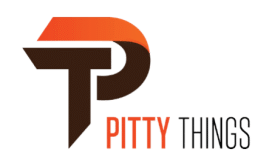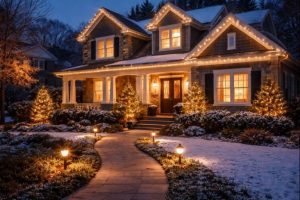A property’s roof plays a crucial role in determining its market worth, both in terms of visual appeal and functional performance. While buyers often focus on kitchens, bathrooms, or landscaping when evaluating a home, the condition and quality of the roof can significantly influence their decision-making. A roof acts as the first line of defense against the elements, preserving the home’s structure and interior, while also contributing to its energy efficiency and overall aesthetic. We will explore how roofing affects property value, considering factors such as material choices, maintenance, energy performance, and curb appeal, which can either enhance or diminish a home’s worth.
Key Ways Roofing Impacts Property Value
Curb Appeal and First Impressions
A home’s roof is often one of the first features people notice when approaching the property. A roof that is clean, well-maintained, and constructed with high-quality materials—such as those installed by RoofsOnly.com of Austin, TX—creates an immediate impression of care and durability. On the other hand, an outdated or visibly damaged roof can deter buyers before they even step inside. When prospective buyers see a roof in excellent condition, they associate it with fewer future expenses, which can increase their willingness to meet the asking price. Beyond the physical appearance, modern roofing styles and colors can complement the home’s architecture, making it more visually appealing in real estate listings and in person. Even subtle upgrades such as architectural shingles or metal accents can differentiate a home in competitive markets. This connection between aesthetic quality and perceived value is one of the most direct ways roofing impacts property worth.
Structural Protection and Longevity
A roof’s primary job is to protect the property from rain, wind, snow, and harsh sunlight. If the roof is compromised, moisture can infiltrate and cause issues like mold growth, rotting wood, and weakened foundations—problems that significantly reduce a home’s market value. A structurally sound roof ensures that the property remains in good condition over time, which reassures potential buyers about the home’s long-term durability. Materials such as high-grade asphalt shingles, clay tiles, or standing-seam metal not only provide aesthetic value but also add decades to the lifespan of the roof when properly installed and maintained. In competitive housing markets, buyers often view a roof with a long remaining life expectancy as a financial advantage, as it reduces the likelihood of major repair costs in the near future. Thus, structural reliability directly influences property appraisals and buyer interest.
Energy Efficiency and Cost Savings
Roofing plays an important role in regulating a home’s temperature, which can significantly impact utility costs. Energy-efficient roofing materials—such as reflective shingles, metal roofing with specialized coatings, or green roofing systems—help reduce heat absorption during summer while providing adequate insulation in winter. These features not only lower monthly energy bills but also appeal to eco-conscious buyers who value sustainable living. The long-term savings from an energy-efficient roof can be a compelling selling point, especially as energy prices rise. In some cases, upgrading to energy-efficient roofing can also qualify homeowners for tax incentives or rebates, further increasing its financial appeal. Buyers are increasingly factoring in these savings when evaluating property value, making energy performance a key contributor to how roofing impacts real estate worth.
Maintenance History and Buyer Confidence
The condition of a roof is not just about its appearance but also its documented maintenance history. A well-maintained roof signals to buyers that the homeowner has been proactive in caring for the property, reducing the likelihood of hidden problems. Providing records of inspections, repairs, and cleanings can give buyers peace of mind, increasing their willingness to pay a higher price. In contrast, a roof with missing shingles, moss growth, or visible sagging can raise concerns about potential water damage or structural issues. Since roof repairs or replacements can be costly, buyers often factor these expenses into their offer. A home with a roof that is still within its optimal lifespan and has a clear history of upkeep stands out as a safer investment, giving sellers a competitive edge in negotiations.
Impact on Insurance and Financing
The age and condition of a roof can directly affect homeowners’ insurance rates and mortgage approvals. Insurance companies often require a roof to be within a certain age range and in good condition to provide coverage, and they may offer lower premiums for newer, more durable roofing materials. Similarly, lenders may be hesitant to approve financing for properties with roofs in poor condition, as they pose a higher risk for costly damage. A roof that meets or exceeds insurance and lender requirements can therefore make the buying process smoother, broadening the pool of potential buyers. This added financial security can translate into higher property values, as buyers perceive the home as a lower-risk investment. Sellers who invest in roof upgrades or replacements before listing their property often recover a significant portion of that cost through increased sale prices and faster closings.
The roof of a property is far more than a functional covering; it is a defining factor in determining the home’s market value. From enhancing curb appeal and ensuring structural integrity to improving energy efficiency and influencing insurance terms, roofing has a multifaceted impact on how a property is perceived and priced. Buyers tend to gravitate toward homes with roofs that promise long-term reliability, reduced maintenance costs, and added aesthetic appeal. By understanding the ways roofing influences property value, homeowners can make strategic decisions about repairs, upgrades, and maintenance that pay off in both the short and long term. Ultimately, a well-chosen and well-maintained roof is not just a protective feature—it’s an investment that can significantly enhance the overall worth of a home.






